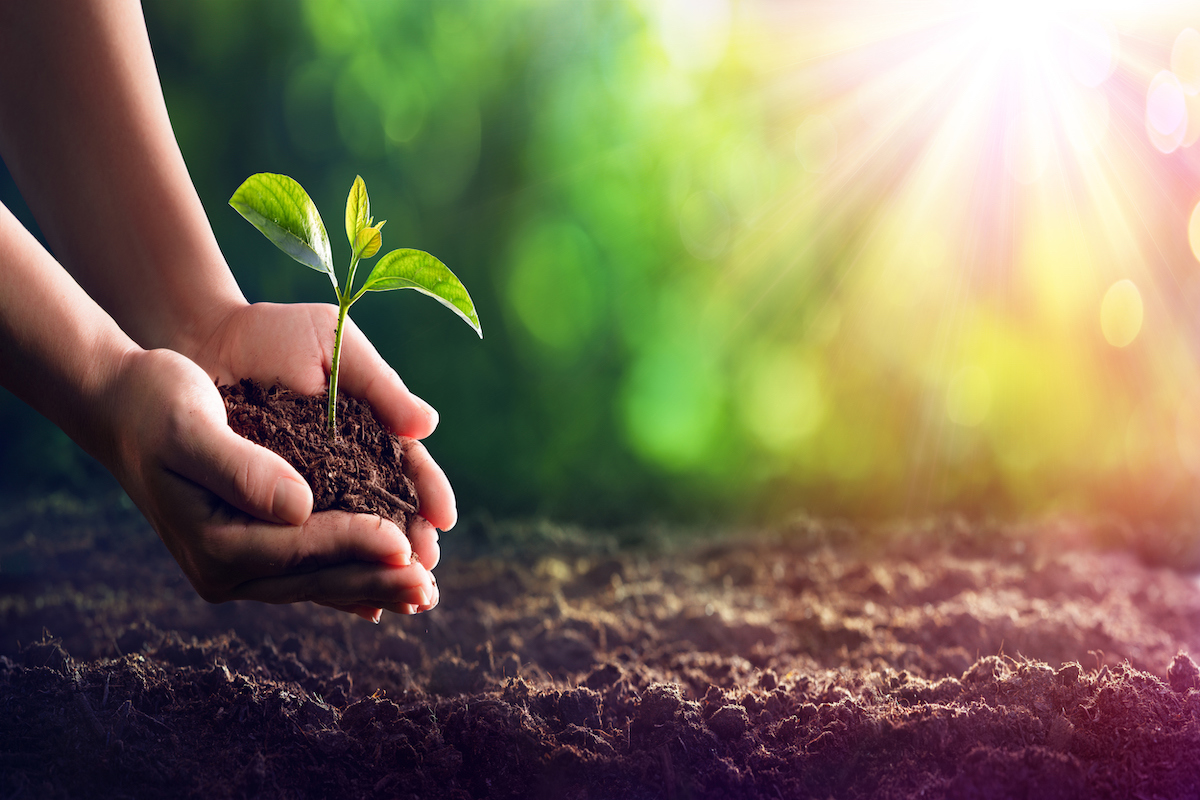Odisha is self-sufficient in food production, third largest contributor to national PDS network: Naveen Patnaik
The farmers lay the foundation of the nation's economy. It is on this foundation, we build the pillars of a vibrant economy.
The global soil conservation movement has once again centred our attention on the issue of soil degradation and reminded us that this precious natural resource is in crisis.

Hands Planting The Young Plant Into The Dirt (Photo: iStock)
The global soil conservation movement has once again centred our attention on the issue of soil degradation and reminded us that this precious natural resource is in crisis. Saving it from further degradation isn’t merely about our survival, but the survival of future generations as well. Globally, it’s said that our soils support 95 per cent of all food production, and by 2060, our soils will be forced to provide as much food as we have consumed in the last 500 years, whereas, around half of the topsoil on the planet has been lost in the last 150 years. Hence, the movement aims to encourage the formulation of policies to address the ongoing soil crisis, take actions to revitalise our ecology, and restore the organic content in cultivated soil.
Perhaps no one else has been able to summarise the value of soil as judiciously and succinctly as David Montgomery in his book, Dirt: The Erosion of Civilizations. He said soil is something “…we try to keep out of sight, out of mind, and outside. We spit on it, denigrate it, and kick it off of our shoes. But in the end, what’s more important? Everything comes from it, and everything returns to it. If that doesn’t earn dirt a little respect, consider how profoundly soil fertility and soil erosion shaped the course of history.” The very first human civilisations were born of a prosperous marriage between abundant water and fertile soil, both of which are in crisis now. Soil isn’t just necessary to produce food; it’s one of our most cost-effective reservoirs for sequestering carbon. It’s the foundation for our biodiversity. It’s also a great filter-making our groundwater safe from biological and other contaminators. When soil is lost or eroded, we lose not only food and levels of carbon sequestration and biodiversity, but our groundwater sources also begin to degrade. Once degraded, restoring groundwater quality is nearly impossible. Over the years, we’ve lost half of the basic building blocks that make soil productive.
Sadly, in Nepal, the soil crisis has never been as visible as the water crisis. In the case of the latter, we see long queues at public taps, and experience dry taps at home, whereas a soil crisis is masked by the market, which simply imports food from other places and makes it readily available to us; therefore, we rarely, if ever, notice the reduction in domestic food production unless it’s reported in the media and even then, the cause behind it ~ the deteriorating health of soil ~ isn’t obvious. Our domestic production’s inability to meet our demands does- n’t seem to bother anyone. Why do we have the lowest productivity in the region? The truth is we’ve left our soil’s health to the mercy of natural forces. We, particularly those of us not engaged in agriculture, are utterly divorced from the reality that ensures our food security. Thus, the degradation of our soil hasn’t received as much attention as it deserves, and is unlikely to be the focus now.
Advertisement
After attending the first UN environment conference held in Stock- holm in 1972, Erik Eckholm, a correspondent for The New York Times, wrote the book Losing Ground: Environmental Stress and World Food Prospects in 1976 in which he explained the degradation of the global environment and specifically dis- cussed deforestation in the Himalaya and the alarming rate of rampant soil erosion in the Nepal Himalaya calling it Nepal’s “most precious export”. Evidently, one hectare of land in Nepal loses an average of about 22 tonnes of soil in a year. In the upland farms, the figures are even higher.
Advertisement